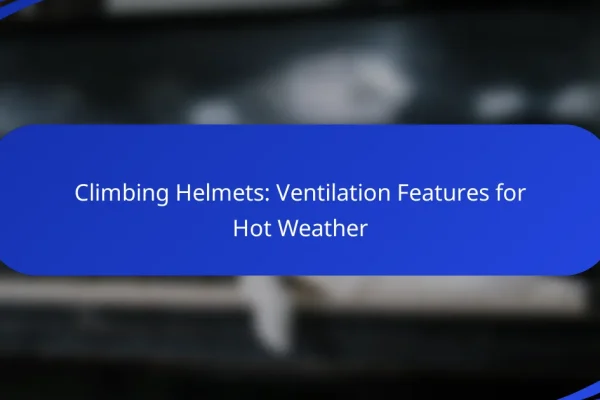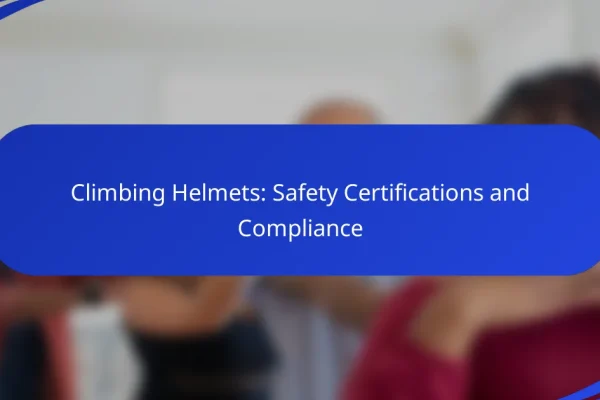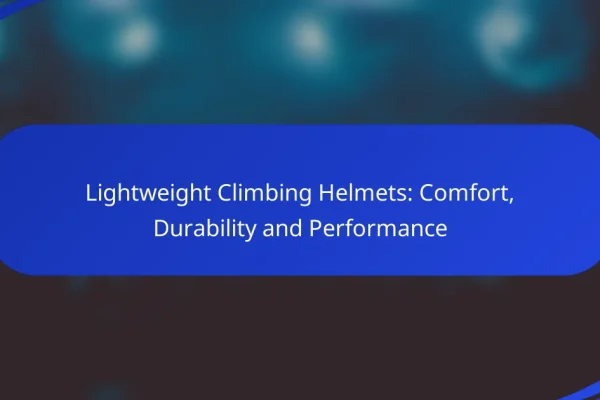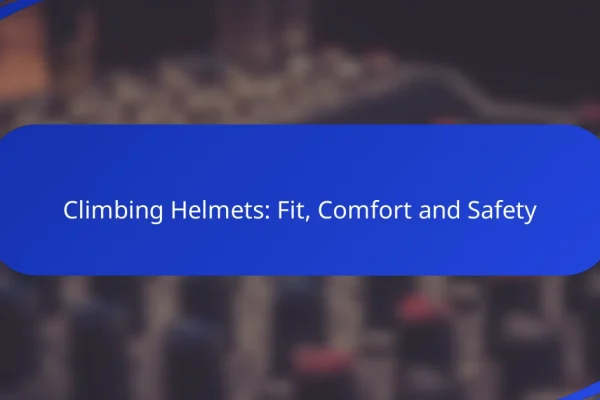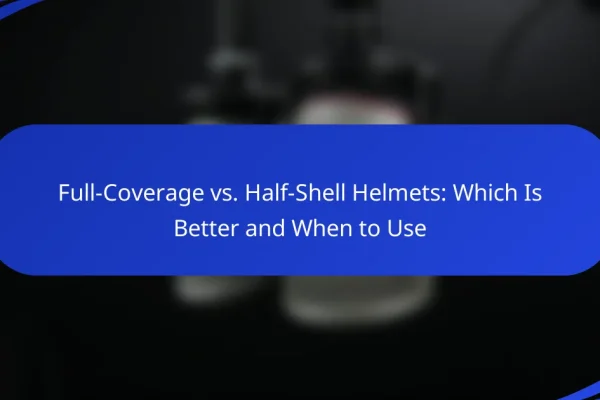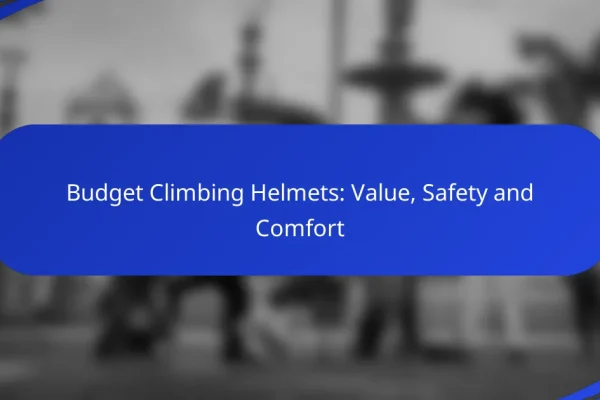What are the best climbing helmets for safety?
The best climbing helmets prioritize safety through robust construction, lightweight materials, and comfortable fit. Key factors to consider include impact resistance, ventilation, and compliance with safety standards like UIAA or CE.
Petzl Meteor
The Petzl Meteor is known for its lightweight design and excellent ventilation, making it a popular choice among climbers. It features a durable outer shell and an expanded polystyrene foam liner that absorbs impacts effectively.
This helmet is particularly suited for sport climbing and alpine use, with a comfortable fit that accommodates various head sizes. Its adjustable chin strap and removable headlamp clips enhance usability during climbs.
Mammut Skywalker
The Mammut Skywalker combines safety and comfort with its robust shell and comfortable padding. It meets stringent safety standards and is designed for both climbing and mountaineering activities.
With a focus on ventilation, the Skywalker includes multiple air vents to keep climbers cool during strenuous ascents. Its adjustable fit system ensures a secure fit, reducing the risk of slippage during climbs.
Black Diamond Half Dome
The Black Diamond Half Dome is a versatile helmet that offers excellent protection at a reasonable price. It features a durable outer shell and an EPS foam liner that provides reliable impact resistance.
This helmet is adjustable and fits a wide range of head sizes, making it a great choice for both beginners and experienced climbers. Its classic design and solid construction make it a trusted option for various climbing disciplines.
Camp Speed 3.0
The Camp Speed 3.0 is designed for speed and performance, making it ideal for competitive climbers. Its lightweight construction and streamlined design reduce fatigue during long climbs.
This helmet includes a robust outer shell and an inner foam liner for optimal protection. The adjustable fit system and ventilation holes ensure comfort without compromising safety.
Wild Country Superlight
The Wild Country Superlight is one of the lightest helmets available, perfect for climbers who prioritize weight savings. Despite its minimal weight, it still meets safety standards for impact protection.
This helmet features a simple adjustment system and a comfortable fit, making it suitable for long days on the rock. Its compact design allows for easy packing, making it a favorite among alpine climbers.
How do climbing helmets protect you?
Climbing helmets protect you by absorbing impact energy and preventing injuries from falling objects or falls. They are designed to shield the head from various hazards encountered during climbing activities.
Impact resistance
Impact resistance is a crucial feature of climbing helmets, as they are built to withstand significant forces. Most helmets are tested to meet specific safety standards, such as the UIAA or CE certifications, which ensure they can absorb impacts from falling rocks or accidental falls.
When selecting a helmet, look for models that offer high impact resistance ratings. Helmets with a hard outer shell and an inner foam layer typically provide the best protection. Consider helmets that have passed rigorous testing for both vertical and lateral impacts.
Head coverage
Head coverage refers to the extent of protection a helmet provides to the head. A well-designed climbing helmet should cover not just the top but also the sides and back of the head to safeguard against various angles of impact.
When choosing a helmet, ensure it fits snugly and covers critical areas without obstructing your vision. Some helmets offer extended coverage for additional protection, which can be beneficial in more hazardous climbing environments.
Ventilation features
Ventilation features in climbing helmets are essential for comfort during strenuous activities. Proper airflow helps regulate temperature and reduces sweat buildup, making climbs more enjoyable.
Look for helmets with strategically placed vents that allow for airflow without compromising safety. A good balance between ventilation and protection is key; too many vents may weaken the helmet’s structure. Consider trying on helmets to find one that feels comfortable and well-ventilated during use.
What features should you consider when buying a climbing helmet?
When purchasing a climbing helmet, key features to consider include weight, fit and adjustability, and material durability. These factors significantly impact comfort, safety, and overall performance during climbs.
Weight
The weight of a climbing helmet is crucial for comfort, especially during long climbs. A lightweight helmet, typically weighing between 250 to 400 grams, reduces fatigue and allows for better mobility.
However, lighter helmets may sacrifice some durability. It’s essential to find a balance between weight and protection, ensuring that the helmet meets safety standards while remaining comfortable for extended wear.
Fit and adjustability
A proper fit is vital for a climbing helmet to provide adequate protection. Look for helmets with adjustable straps and a secure chin strap to ensure a snug fit without being overly tight.
Many helmets come with sizing systems, such as dial adjustments or removable padding, allowing for customization. Always try on the helmet before purchasing to ensure it fits well and stays in place during movement.
Material durability
The materials used in a climbing helmet affect its durability and protection level. Common materials include polycarbonate and expanded polystyrene (EPS), which offer a good balance of weight and impact resistance.
Check for certifications like EN 12492 or UIAA, which indicate that the helmet meets specific safety standards. A durable helmet can withstand multiple impacts, making it a worthwhile investment for serious climbers.
Where can you buy climbing helmets online?
You can purchase climbing helmets online from various retailers that specialize in outdoor gear. Key options include dedicated outdoor stores and large e-commerce platforms, each offering a range of brands and price points to suit different needs.
REI
REI is a well-known outdoor retailer that offers a variety of climbing helmets from reputable brands. Their selection often includes helmets that meet safety standards such as UIAA and CE certifications, ensuring quality and protection.
Shopping at REI provides the advantage of knowledgeable staff who can assist with fitting and recommendations. Additionally, members can benefit from discounts and a generous return policy, making it a reliable choice for climbers.
Backcountry
Backcountry specializes in outdoor gear and apparel, featuring a curated selection of climbing helmets. They focus on high-performance products, catering to serious climbers looking for advanced features like lightweight materials and enhanced ventilation.
Backcountry often runs promotions and offers free shipping on orders over a certain amount, which can be a cost-effective option for purchasing climbing helmets. Their website also includes customer reviews, helping you make informed decisions based on real user experiences.
Amazon
Amazon provides a vast marketplace for climbing helmets, featuring numerous brands and price ranges. This platform allows for easy price comparisons and access to customer reviews, which can guide your purchasing decision.
While shopping on Amazon, be cautious of third-party sellers and ensure that the helmets meet safety standards. Look for products with good ratings and verified purchases to ensure quality and reliability.
What are the differences between hard shell and foam climbing helmets?
Hard shell climbing helmets feature a rigid outer layer, while foam helmets rely on soft materials for impact absorption. The choice between them depends on the type of climbing, safety requirements, and personal comfort preferences.
Hard shell durability
Hard shell helmets are designed for maximum durability, often made from materials like polycarbonate or ABS plastic. These helmets can withstand significant impacts and are ideal for environments where falling rocks or sharp objects are a concern.
While hard shell helmets are robust, they can be heavier than foam options. It’s essential to balance weight and protection based on the climbing activity. For example, if you’re bouldering or sport climbing in areas with minimal risk of falling debris, a lighter helmet may suffice.
Regularly inspect hard shell helmets for cracks or dents after use, as these can compromise their protective capabilities. Replace them if you notice any significant damage to ensure your safety while climbing.
